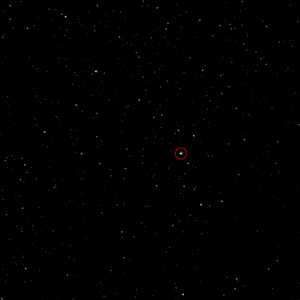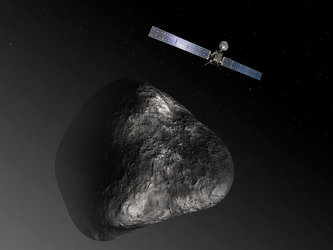Accept all cookies Accept only essential cookies See our Cookie Notice

About ESA
The European Space Agency (ESA) is Europe’s gateway to space. Its mission is to shape the development of Europe’s space capability and ensure that investment in space continues to deliver benefits to the citizens of Europe and the world.
Highlights
ESA - United space in Europe
This is ESA ESA facts Member States & Cooperating States Funding Director General Top management For Member State Delegations European vision European Space Policy ESA & EU Space Councils Responsibility & Sustainability Annual Report Calendar of meetings Corporate newsEstablishments & sites
ESA Headquarters ESA ESTEC ESA ESOC ESA ESRIN ESA EAC ESA ESAC Europe's Spaceport ESA ESEC ESA ECSAT Brussels Office Washington OfficeWorking with ESA
Business with ESA ESA Commercialisation Gateway Law at ESA Careers Cyber resilience at ESA IT at ESA Newsroom Partnerships Merchandising Licence Education Open Space Innovation Platform Integrity and Reporting Administrative Tribunal Health and SafetyMore about ESA
History ESA Historical Archives Exhibitions Publications Art & Culture ESA Merchandise Kids Diversity ESA Brand Centre ESA ChampionsLatest
Space in Member States
Find out more about space activities in our 23 Member States, and understand how ESA works together with their national agencies, institutions and organisations.
Science & Exploration
Exploring our Solar System and unlocking the secrets of the Universe
Go to topicAstronauts
Missions
Juice Euclid Webb Solar Orbiter BepiColombo Gaia ExoMars Cheops Exoplanet missions More missionsActivities
International Space Station Orion service module Gateway Concordia Caves & Pangaea BenefitsLatest
Space Safety
Protecting life and infrastructure on Earth and in orbit
Go to topicAsteroids
Asteroids and Planetary Defence Asteroid danger explained Flyeye telescope: asteroid detection Hera mission: asteroid deflection Near-Earth Object Coordination CentreSpace junk
About space debris Space debris by the numbers Space Environment Report In space refuelling, refurbishing and removingSafety from space
Clean Space ecodesign Zero Debris Technologies Space for Earth Supporting Sustainable DevelopmentLatest
Applications
Using space to benefit citizens and meet future challenges on Earth
Go to topicObserving the Earth
Observing the Earth Future EO Copernicus Meteorology Space for our climate Satellite missionsCommercialisation
ESA Commercialisation Gateway Open Space Innovation Platform Business Incubation ESA Space SolutionsLatest
Enabling & Support
Making space accessible and developing the technologies for the future
Go to topicBuilding missions
Space Engineering and Technology Test centre Laboratories Concurrent Design Facility Preparing for the future Shaping the Future Discovery and Preparation Advanced Concepts TeamSpace transportation
Space Transportation Ariane Vega Space Rider Future space transportation Boost! Europe's Spaceport Launches from Europe's Spaceport from 2012Latest

Vintage comet
Thank you for liking
You have already liked this page, you can only like it once!
It was 45 years ago when astronomer Klim Churyumov and Svetlana Gerasimenko, one of his researchers, unwittingly began a new chapter in the history of space exploration.
During a comet-hunting expedition to Alma-Ata Observatory, Kazakhstan, they discovered the bizarre, ice-rich object – subsequently named Comet 67P/Churyumov–Gerasimenko – that is now under close scrutiny by ESA’s Rosetta spacecraft.
In November 2014 it is hoped that more secrets will be revealed when Rosetta’s Philae attempts the first soft-landing on the nucleus of a comet.
These two images, taken with a wide-angle Schmidt telescope, were exposed a short time apart during the historic expedition. The pair of photographic plates, taken by Klim Churyumov on 21 September 1969, shows a fuzzy object (indicated by the arrows) shifting position slightly in the night sky.
The comet appears indistinct because its solid heart is surrounded by a coma of gas and dust, material that was ejected into space as the ice-rich nucleus was warmed by solar radiation.
Before the era of digital cameras, imaging astronomical objects was a slow, painstaking process involving lengthy exposures of the same part of the sky on glass plates that were coated with a light-sensitive emulsion.
Glass-backed plates, rather than film, were commonly used in astronomy because they did not shrink or deform noticeably in the development process or under different environmental conditions. They were held in large-format frames for wide-field imaging.
Each successive plate was exposed after an interval of 20–30 minutes. The plates then had to be taken back to the laboratory to be processed and studied. By comparing the images, it was possible to find new comets and other fast-moving objects as they shifted across the background of more distant, ‘fixed’ stars.
Since the discovery of this comet, advances in space exploration have revolutionised comet studies, starting with the first close-up images of comet Halley obtained by ESA’s Giotto spacecraft in 1986. Since then, a handful of comets has been visited by spacecraft and some comet dust has been brought back to Earth.
These studies show that comets can no longer be regarded simply as dirty snowballs. Ideas about their origins and nature have greatly altered and there are still many questions – which Rosetta and its Philae lander could go a long way towards answering.
-
CREDIT
Image courtesy K. Churyumov -
LICENCE
ESA Standard Licence

Comet 46P Delft porcelain plate

Comet on 4 June

Comet Churyumov–Gerasimenko on 28 February 2014

Rosetta at comet















 Germany
Germany
 Austria
Austria
 Belgium
Belgium
 Denmark
Denmark
 Spain
Spain
 Estonia
Estonia
 Finland
Finland
 France
France
 Greece
Greece
 Hungary
Hungary
 Ireland
Ireland
 Italy
Italy
 Luxembourg
Luxembourg
 Norway
Norway
 The Netherlands
The Netherlands
 Poland
Poland
 Portugal
Portugal
 Czechia
Czechia
 Romania
Romania
 United Kingdom
United Kingdom
 Slovenia
Slovenia
 Sweden
Sweden
 Switzerland
Switzerland
























